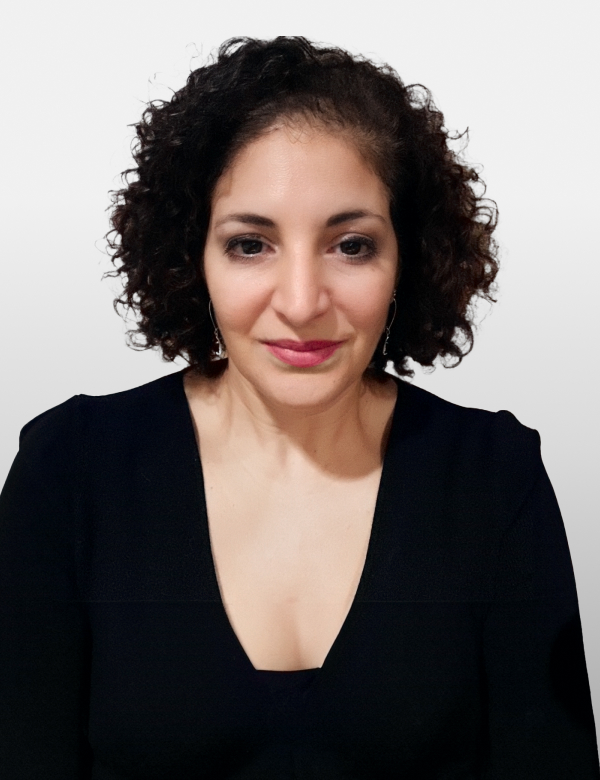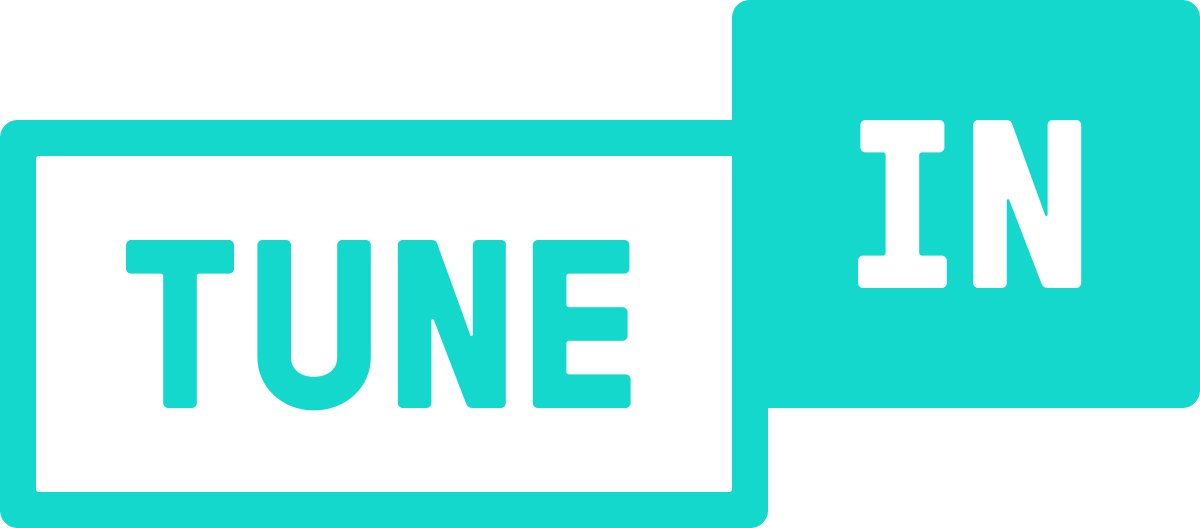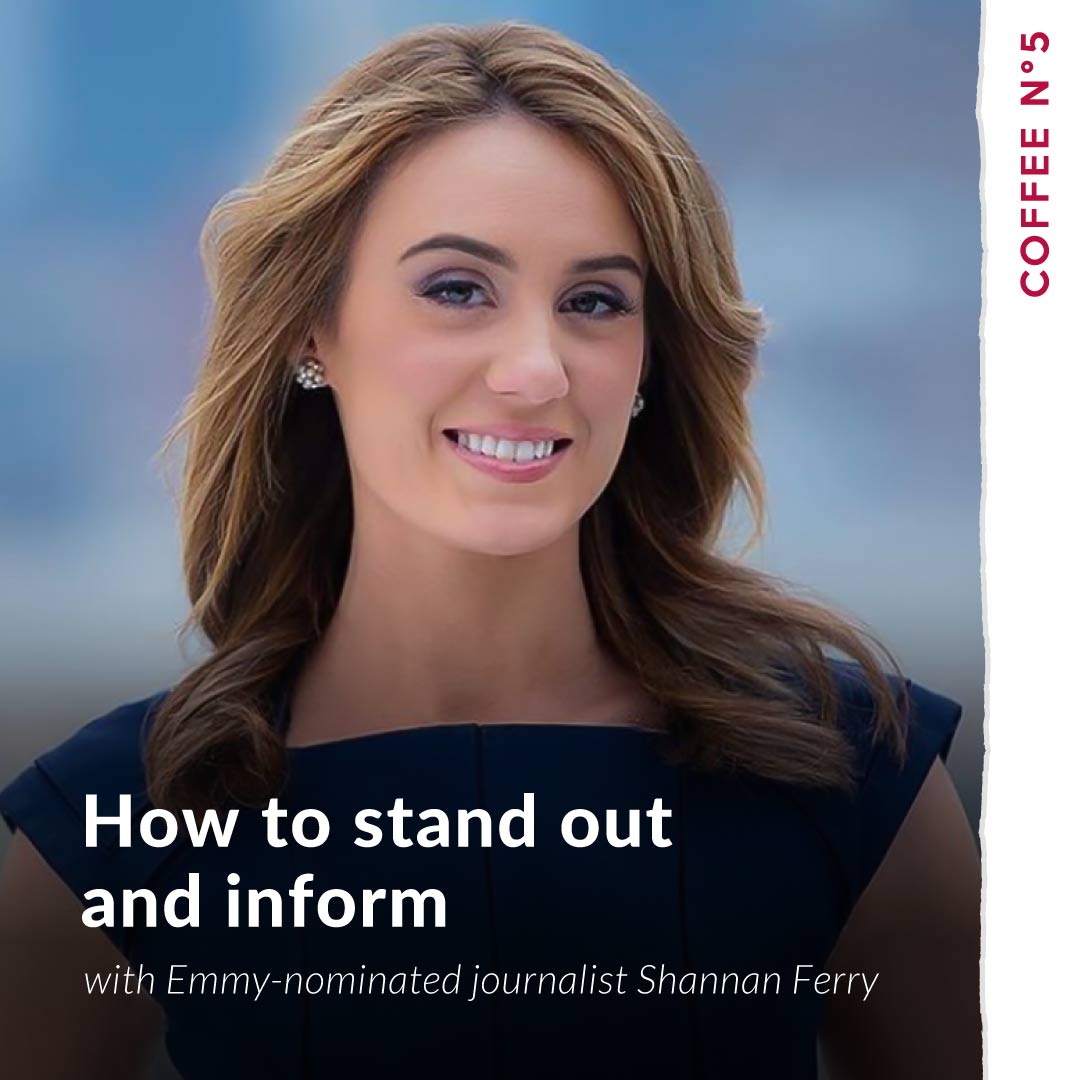Lara Schmoisman (00:11)
Hi everyone. Welcome back to coffee number five. It’s your coffee ready? Because mine is. I, you know me and I’m always thinking and I’m always processing how can I be a better person? How can I be a better boss? How can I be a better leader? And I lately been playing a lot with the idea being a boss or being a leader. Being a leader, being a boss.
and how these are together, but at the same time, they can be completely different. So I thought I bring another friend to talk about this. So welcome Andrea Moore. Thank you so much for being here today.
Andrea Moore (00:46)
you
Pleased to see you. Thank you so much for having me, Laura.
Lara Schmoisman (00:54)
It was so cool that I can always been thinking about things and bring someone special to talk about them. And in this case, someone like you, Andrea, that you’ve been, my God, you’ve been everywhere in this industry and you held so many leadership roles. So why don’t walk us a little bit through your career first so people get to know you. So where did you start? What was your first job?
Andrea Moore (01:16)
Sure.
So
my first job, my first job in retail or my first job job?
Lara Schmoisman (01:24)
Your first job ever. Let’s start from the beginning.
Andrea Moore (01:26)
Well,
I think my first job ever was when I was a teenager. I was a lifeguard and I was a hostess at a restaurant. And when I was in college, I was seasonal help at the limited. And that’s where I really got the bug for retail. When I finished my master’s degree, I was a store manager for fashion company for about a year. Then I went into banking, which was really about marketing. So I worked for
a very big credit card marketing company and worked there for a couple of years. And then I moved to Boston. So I’m originally from outside Philadelphia. And then I moved to Boston for my first real corporate retail role, which was for the fashion brand, J Jill. And there I was there for quite a long time. So ⁓ I launched the e-commerce business there. ⁓
when we had no stores and no e-commerce business. And when I left, we were selling to Talbot’s and we had 250 stores and a very big digital business. And then that was in Boston.
Lara Schmoisman (02:27)
Let’s talk about
the multi-channel.
Andrea Moore (02:31)
Yeah, I love Omnichannel. That’s like where my heart is. And then I left there and I went to New York and worked for another big apparel company, 600 stores publicly traded company, launched e-commerce there. And that was like the flip of the problem. Like they already had 600 stores. They didn’t really believe in digital. we had to find ways to make Omnichannel work ⁓ in a way that was compelling for the customer and for the company. So ⁓ that’s really like the basis of my career.
Lara Schmoisman (02:34)
Yeah.
Andrea Moore (02:59)
e-commerce and retail and fashion. ⁓ yeah, those were kind of two big roles, two big important places that I worked where I learned so much.
Lara Schmoisman (03:10)
So
to you, what’s the difference between being a boss and a leader?
Andrea Moore (03:14)
I think they’re so different. And I think being a boss is much more transactional, much more task oriented. ⁓ feel even the word, feels very top down as opposed to collaborative. ⁓ and I think it’s having that ability to be and do some of those things can be important when it’s time to get the job done or it’s time to call the shots.
But being a leader is much more compelling in the grand scheme of things in the long run and in day-to-day working experience with people. Because at the end of the day, you’re working with people and you can get nothing done without other people, period, end of story. And so leading people I think is much more compelling.
Lara Schmoisman (03:58)
been seeing something in the industry for a long time now that I start to question if there is a confusion with leadership and mentorship many times. Because I had even situations at my agency that people come and say, I come to learn. And no, if you’re hired for a job, you’re coming to do a job.
Andrea Moore (04:10)
Yeah. Yeah.
Yeah.
You come to do. Yeah.
Lara Schmoisman (04:26)
to bring something to the table, but at the same time, of course you can learn. You can always learn. The opportunities are there for you to learn, but first you need to concentrate in doing your job and do it well.
Andrea Moore (04:28)
Yeah.
Right.
Yes. Yeah, think it’s, I think it’s both, I agree with you. think first and foremost, there is a job to be done. That’s why you’re there. And that’s the priority. And then mentorship is something different. And I think you need a leader, but I think a mentor is and should be and could be a separate person. And I have, in some cases, asked people in my network to be mentors for people on my team that are,
They’re totally outside people. They work in a different company. This is just a sounding board for someone who is trying to evolve in their career and wants to talk to somebody who’s like not tied to the current situation. So I do think the two things are different. I think it’s really good to hear from people when they’re coming in the door. What do they want to learn and expand and grow into while they’re excelling at their current role? Because if you’re not hitting the objectives of your current role, it’s very hard to evolve into other things.
Lara Schmoisman (05:35)
Yeah, I think that’s a really valid and important question. And it’s something that I always ask my team to ask when we’re interviewing, where do you want your career to go? I want someone in my team that that can grow with us and that we can fulfill that growth.
Andrea Moore (05:45)
Yeah.
Right.
Right. Yeah, and I think hiring people is, it’s a very precious resource. it’s a lot of times in big companies, you have to fight for the role, you have to get the money allocated, you desperately need the person like long before you’re actually able to get the person hired. And so you’re investing a lot in bringing someone in and you want to make sure that that’s
a good fit for everyone and also that the person is going to be successful and integrate well with the team and all of that and then kind of evolve beyond there. for sure, think in this, especially in this day and age, you can’t just hire someone for being good at one thing. Like you have to be able to see like where can they flex in the future.
Lara Schmoisman (06:31)
Did you have any situation? Because I did. And I think over time you get that gut feeling. Someone once told me when you hire someone, that person needs to be willing and able. Sometimes they’re more, they’re able, but they’re not willing. So that’s not the goal. But if they’re able and if they’re willing, but not able, also it’s a problem. So.
Andrea Moore (06:39)
Yeah.
Yeah.
Yeah, right.
Right.
Lara Schmoisman (06:57)
But sometimes as a leader, you need to be a little flexible and get to know the person and also use your experience. And I always say, I use my sixth sense. Like for example, we had a situation that someone was hired for job. And I knew immediately that she wouldn’t be fit, good fit for that role. But he had that gut feeling that she will excel in something else. And it worked.
Andrea Moore (07:04)
Right.
Yeah.
Yeah. That’s
Lara Schmoisman (07:26)
So,
Andrea Moore (07:26)
amazing.
Lara Schmoisman (07:26)
and how, I mean, how can we, because I know me as a company also, try to have logistics and systems in place, but at the same time, sometimes we need to break the rules and create these new spaces for growth. Because what is more important to create those, have those logistics or be able to have the right person?
Andrea Moore (07:41)
rent.
Yeah, think it’s very, it’s kind of a courageous thing to almost go out on a limb and hire someone that maybe doesn’t check all the boxes, but is going to be a great person as they evolve into the company and the role. I think less and less of that is happening, especially in the current economy and the way jobs are sort of structured. There’s not a lot of room for chance, right? There’s not a lot of risk taking on.
This is a super bright person. They may not fit exactly in what I want. Let me take a chance on them. I just, I think there’s a lot less of that happening in the market right now because the job market is very tight and the economy is sort of a challenge right now. And, ⁓ but I do think the best leaders are ones that can see the value in someone that’s maybe just not right on the surface, but maybe a longer term potential and, you know, lean into that as opposed to shy away from it.
Lara Schmoisman (08:46)
Yeah. So I believe that we hire people that do have skills to do stuff. We’re not hire skills in a person.
Andrea Moore (08:52)
Right.
Right. Right. Right. Yeah, I mean, at the end of the day, there are people that you have to work with every day and that get to come and do work on projects and come together. so there has to be a fit and a cultural fit. They have to want it. Like you said, they have to be willing and able. I think that’s so right. Like, a lot of people can do the job, but maybe they don’t want to do the job or they really want the job, but maybe they don’t have the skills. So I think it is a combination of things and fit, right? Like
Some people are not gonna be a fit in the corporate culture that you have, whatever that is. ⁓ And so you have to really understand that upfront. And to be fair, make it clear to the candidate upfront. Like, listen, this is a startup, for example. This is a startup. You’re not gonna have a lot of resources. How do you feel about that?
Lara Schmoisman (09:40)
Exactly.
But now let me transfer a conversation in one of our favorite topics, which is Omnichannel. Because in Omnichannel, which is one of my favorite topics ever, and I know it’s your too, ⁓ we have another challenge. We have so many moving parts and as a leader, we need to know a lot. We need to know a lot about every department, but also we need to be kind of an interpreter.
Andrea Moore (09:48)
Yes.
Right.
Yeah.
Lara Schmoisman (10:09)
from what, because sometimes, and this is a challenge as a leader, how you work with two different departments that they talk a completely different language, but somehow in this new omnichannel culture, they need to come together.
Andrea Moore (10:09)
Right.
Right.
Yeah, 100%. And I think, I mean, to me, Omnichannel is really where the magic happens. Like if you have an incredible, like compelling brand and compelling product, that’s the hard, that’s the hard part of all of this, right? You’ve got to have a product and a story that makes sense and that’s interesting to people. And then how do you bring it to life in each channel and what is unique about each one of those channels that…
Lara Schmoisman (10:29)
Mm-hmm.
Andrea Moore (10:48)
would cause someone to buy it. Like if they’re on Amazon or if they’re in a department store or if they’re in a boutique or if they’re on your dot com, why would they buy it then and there versus another place, right? And then also, yeah, there’s a lot that goes on behind the curtain. Merchandising, marketing, technology, all working together to deliver this incredible experience to the consumer because you know it when things are working and you know it when they’re not, even as a consumer.
Lara Schmoisman (11:14)
Well, we have something
beautifully that is called beautiful, that is called data, and we can see what works and what doesn’t. But, but the question is how do you work and how do you lead a team that they have so different skills and mindsets in come together for one purpose, because each one puts a little different part of the puzzle, but everything needs to fit together.
Andrea Moore (11:19)
Yeah. Exactly.
Well, I think you have to be a great synthesizer. think you have to, and I consider myself this, you have to be a conductor. If you’re the conductor of the orchestra, you’re not playing the drums and the violin and the cello. You are seeing the whole picture. You understand what it takes to play the violin, but you’re not there doing it. Someone else is. So you have to understand what is their skillset? What is their language? What are they bringing to the table for whatever you’re trying to do?
And how do you make all these things work? Because the technical people are going to be very technical. The marketing people are likely to be very creative, although also analytical. And so how do you bring all of those things together around a common idea? I think the long answer to your question is you have to see the big picture. You have to be able to synthesize and use the language of the particular skillset of the person you’re trying to bring along to make sure that they understand what their role is in success. And also.
I think being really clear on what success looks like.
Lara Schmoisman (12:38)
Yeah. Before being an agency owner, I was a project manager. And I will say that one of my biggest challenges was always working with a different team when I was coming to a project. When you know your team, you also know the strength and the weaknesses of your team. So you know that you can give this to this person, but you cannot give it to this person because this person maybe is great on the skills, but it’s not a great communicator.
Andrea Moore (12:49)
Yeah.
Right. Right.
Right.
Right.
Lara Schmoisman (13:05)
So
you know how to tackle the team and how to divide and conquer.
Andrea Moore (13:10)
Right, yeah. And I think that’s the great thing about working together with people over a period of time is really being able to lean into someone’s strengths.
Lara Schmoisman (13:20)
But
what do you say about this culture that right now everything seems to be too fast. It’s like I only learn, I’ve been here for three months or six months and I feel like I learn everything. So let’s move on.
Andrea Moore (13:26)
Yeah.
Yeah.
yeah, you mean you think people in the job think they have learned everything? I think that’s not surprising and I think that’s a function of a younger generation of people and how they see the world. think there’s some, ⁓ I think one of the solutions is being able to show people the bigger picture than just their job, right? Because their job, maybe they do feel like they’ve understood but
Lara Schmoisman (13:36)
in the job.
Andrea Moore (13:58)
they may not understand the big picture. And I think oftentimes people are too siloed to really understand what role they play in a bigger scenario. And I think that may help.
Lara Schmoisman (14:07)
And do you think
that also companies are failing in showing opportunities of growth?
Andrea Moore (14:14)
I some are, I think it depends on the type of company. Some companies are super dynamic and fast moving and move people up the ranks and others do not. I mean, I just think it really depends. I think there are a lot of good examples out there and I think there are a lot of challenging examples out there.
Lara Schmoisman (14:30)
Absolutely. So when, let’s talk a little bit about leadership and budgets, because that’s something that is challenging because you know, you need to put your budget on your team, but also you have platforms. You also have a lot of expenses to keep in mind. So what, when you start a new project, how you go in and say, okay,
Andrea Moore (14:45)
Yeah.
Yes. Right.
Lara Schmoisman (14:56)
This is, there is any percentage that there is any, ⁓ any tip you can give us to say, okay, I have this for marketing. I always want to make sure that I have this extra contingency. There are any tricks that you as a leader bring to the table.
Andrea Moore (15:11)
Yeah,
I I read somewhere a long time ago early in my career that every time you think something costs something, it’s usually 20 % more. And so I try to always keep two things in my budget. One, try to plan, I try to put the line items in at a higher expense than what I think they’re going to really net out. So there’s a tiny bit of cushion in that line item. And then I also try to carve out some percentage of the budget that’s just for extras. ⁓
someone gets a great idea midway through the year and we don’t have to go back to finance and ask for more money or some money needs to be swept because we’re re budgets are being redone and we need to find ways to save money. You already have a chunk of money. That’s not going to hurt existing projects. That’s off to the side. So I think it’s those two tactics that have helped me kind of keep things going in those situations, but always big projects like a big innovation project, a big technology project.
They always take longer and cost more than you think they’re going to. So always ask for more. And if you have a good CFO, they know to keep a little bit of extra on their side too for the same thing. ⁓
Lara Schmoisman (16:13)
Yeah, timing is always a challenge.
Yeah, absolutely.
So we’re talking about the cost of people, but also nowadays, and working with companies that are omnichannel, also you need to budget for platforms. And also platforms are changing. And I feel like there is something that we are not anticipating is the cost of changing a platform many times. We make decisions based in the ROI that the new platform will
bring us, but transitioning one platform to another, we don’t realize how long it might take and how costly it could be.
Andrea Moore (16:55)
Right.
Right. ⁓ Well, when you say platform, should we define what you mean by platform?
Lara Schmoisman (17:02)
software that we use, email marketing software, whatever. I mean, whatever comes to my mind or I don’t know what comes to your mind, but I feel like there is so many options out there and that’s very easy to get pitch and business owners to get tempted. So how do you decide first of all, what is a good fit for a company and then how you implement it without affecting your bottom line budget?
Andrea Moore (17:09)
Yeah.
Yes.
Right.
Yeah, I I think, I think it’s a great question. I think when you’re looking at things like software and technology, you really have to make sure there is a fit between the size of the company and the size of the technology that you’re looking at. Because you don’t want to over invest in something that you maybe don’t have the team to really use. Like that sometimes happens with things like loyalty software or CRM software where it’s more complex than what you really need. And so you’re overpaying.
Lara Schmoisman (17:30)
and timeline.
Andrea Moore (17:57)
And or you don’t have the skill sets internally to really leverage the tech that you’re buying. So I think there’s different solutions available at different size organizations. And I think a good salesperson won’t sell you something that’s not a good fit for you, but that’s a separate conversation. But it’s also incumbent upon the buyer of the technology to make sure it’s the right fit for where the organization is. Let’s say for the next 36 months, Max.
Lara Schmoisman (18:23)
Yeah. also, first of all, you need to commit also. I know that when you are bringing something, there’s going to be a time that you’re going to have to learn that new technology and you need to give it really an opportunity. But also we need to know that then you’re not going to change again. I mean, I had cases with clients that they always get
Andrea Moore (18:33)
Right. Right.
Right.
Yeah.
Lara Schmoisman (18:46)
I heard this platform and let’s try to this platform. So at the end of the day, nothing is working because we don’t give them a chance and we’re not able to learn how that platform or program or whatever software it is works for us and then to create strategy on it.
Andrea Moore (18:49)
right right
Right. Right. Right.
Or the other thing I see, I agree. And the other thing I see is people want the tech, they implement the tech and then they never really go and optimize it. They just move on to the next project. ⁓ Yes.
Lara Schmoisman (19:11)
my God, I seen that so many times. And then
I hear all the time saying, that platform doesn’t work. Well, are you optimizing it? Are you using it? Are you learning it? There’s so many.
Andrea Moore (19:19)
Yeah. Right. Right. Did you add
resources into the budget to take advantage of it? If not, then it’s not really, it’s not really the right thing. Let me just jump off here really quick. ⁓
Lara Schmoisman (19:30)
Yeah, absolutely. Sure.
Andrea Moore (19:34)
Okay, I’m back. Sorry. Hopefully you can just tap that button.
Lara Schmoisman (19:35)
That’s okay.
That’s okay. So.
Andrea Moore (19:39)
Yes. So tech, think also what’s happening in the market right now is people are trying to rationalize their tech stack to not have too many point solutions out there, not have too much confusion, consolidate with one vendor where they can to keep the costs down. And they make it easier to manage because I do think there are a lot of solutions out there and you can’t overdo it. And then you’re in a situation where you’re not really taking advantage, like you said.
Lara Schmoisman (20:07)
I
think when you’re talking about bigger companies, that might be a case, but I think a smaller companies, they have an overload of technology that they don’t need all the time. And they spending a lot of money in different tech and they are not optimizing anything. And at the same time, they having too many different people, having different skills using the different platforms or the different…
Andrea Moore (20:11)
Yeah.
Yeah.
Yeah.
Yeah.
Right, right.
Lara Schmoisman (20:34)
segment of their business and at the same time we feel we are losing that narrative or the brand awareness across platforms.
Andrea Moore (20:42)
Yes, I agree with you. And I think it’s especially hard for a small company because they’re just creating a bigger problem for themselves than what they’re really trying to solve with the technology. So fewer things done better is almost always right.
Lara Schmoisman (20:49)
That’s true, that’s true.
Absolutely.
I always say, that’s one of the first things I do when I take a client is to audit where they’re spending money at. And I found out that many times we can save tons of money in apps that they’re buying and they don’t need. Because I’m not saying that they’re…
Andrea Moore (21:05)
Yeah.
Yes. Yeah. Yeah. Or they forget they have.
I downloaded this app. I’ve been paying for it monthly. Like, I’m not even really using it anymore. We can get rid of that now. Like, but they don’t do that.
Lara Schmoisman (21:21)
Exactly. then, you have those apps, some of them they’re even outdated and they’re better apps or things that they worked in tandem better. Or then there are many brands that even adds optimization. I was talking to someone in NETS and I say, well, you’re not going to be selling this. This is a luxury product and you’re targeting it to an audience that they don’t buy luxury products.
Andrea Moore (21:29)
Right.
Right. Yeah.
Lara Schmoisman (21:47)
So let’s,
the first thing I think you need to do is to, and this is my take, I cut the fat and I’m ready to cook it with lean. And then we can start scaling.
Andrea Moore (21:59)
Yes, I love that idea. Yeah, and I think it frees up everything. It makes the site run more effectively. It frees up marketing money. takes time. It maybe gives people some time back from managing things that are not really adding value. Yeah, I love that idea. I that adds a lot of value.
Lara Schmoisman (22:18)
So now I want to discuss with you a very unpopular or popular or ⁓ challenging question that I’m putting out there for you. You know, we’re Amazon partners. I love Amazon, but I’ve seen a lot of pushback from prostrate and luxury brands of being in Amazon. To me, I know what I think. I want to know what do you think?
Andrea Moore (22:29)
⁓ okay. ⁓
Yeah.
Yeah,
I think it well, are you talking about beauty in particular?
Lara Schmoisman (22:47)
I’m talking beauty, fashion, accessories in many, they feel like they will bring the value of their brand down. And I think if it’s done well, it doesn’t need to. But what do you think?
Andrea Moore (22:49)
Yeah. Yeah.
Yeah,
I think even five years ago, I probably would have said like, don’t go on Amazon, it’s gonna ruin your brand. That’s like not the case anymore. I don’t think it’s optional for most businesses. I think beauty has kind of really come around on it. Even luxury and prestige beauty, many luxury beauty brands are now joining Amazon through prestige beauty. ⁓
Lara Schmoisman (23:23)
Mm-hmm.
Andrea Moore (23:24)
because the reality is their product was being sold there anyway, and they didn’t have control of it. so they had, right, it’s not sold by the brand and the price is not controlled. And so one of the defensive mechanisms that people have used to join Amazon is to get control of the brand and the price. So at a minimum, I think that’s a benefit. ⁓ Then I think there’s a lot of business to be done. are…
Lara Schmoisman (23:28)
Exactly. And it’s not solved by you, so you’re losing money.
huh.
Andrea Moore (23:50)
I mean, every customer in America is basically on Amazon. So why wouldn’t you want to be there in some capacity? What you need to do is figure out what is the right strategy for your business? Is it one P? Is it three P? Yeah. Right.
Lara Schmoisman (24:01)
you the beautiful word of strategy. Yes, it’s all about strategy and how you use Amazon in
your power. So you control the narrative.
Andrea Moore (24:13)
Exactly.
Exactly. How, you know, there are many ways you can be on Amazon. So is it 1P? Is it 3P? Is it FBA? Is it not? Like, how do you want to do marketing? How, what products do you want to sell? Like, you can’t just say like, we’re going to be on Amazon without a plan, because it’s complicated. It’s a very complicated ecosystem. Yeah.
Lara Schmoisman (24:31)
It’s very complicated. It’s
a very complicated and it’s very complicated how to set it up right and how to do it right at the beginning. So it’s not competing with your even retail or your own marketplace. needs to be worked. Exactly. So there are a lot of young brands there. And as we discussed many times, they…
Andrea Moore (24:41)
Yes.
Right. Right. You have to do that right from the beginning. Totally.
Lara Schmoisman (24:58)
It’s a challenging market right now and with the economy that is there. I hear a of brands that they only want to go retail and they are even missing opportunities in the omnichannel world. So what do you think that there is a missing opportunity today in the digital world for brands?
Andrea Moore (25:00)
Yes. Right.
Right. Right.
What’s an opportunity they should be taking advantage of that they’re not? I mean, I think you can’t ignore TikTok. I know there’s a lot of swirl about, it going to be spun off? Is it going to be existing in the US? All that. I think that’s all going to get sorted out and they will probably have an acquirer in the US based on what’s in the news. You know, no crystal ball, but I think you can’t ignore it. I think the pace that it has grown is really unbelievable.
Lara Schmoisman (25:22)
Yes. Uh huh.
Mm-hmm.
Andrea Moore (25:47)
particularly for beauty. And I think you have to have a way to be there. And again, it has to be right for your brand. You have to, can’t, and you can’t just like be on TikTok. You have to have a plan. You have to invest. You have to have the integration. You have to have a product strategy. Like you have to have an influencer strategy.
Lara Schmoisman (25:54)
Absolutely.
Let me tell you something, I say,
⁓ Amazon is a lot of work. TikTok is a lot of work too, and TikTok shop as well. So you need to do it well.
Andrea Moore (26:12)
It’s a lot of work.
Right, right. And the people that dabble in it will then all say, it doesn’t work for me. But it’s not something you can just turn on and see how, you know, if you just turn it on without real marketing behind it or real effort, it’s not gonna work. So.
Lara Schmoisman (26:27)
Absolutely.
Absolutely. Well, Andrea, thank you so much for having coffee with me today. This was really, really a treat.
Andrea Moore (26:34)
Thank
you so much. Thank you for having me and it’s so great to see you as always.
Lara Schmoisman (26:38)
Yeah, and to you guys, I will see you next week with more Coffee No. 5.








